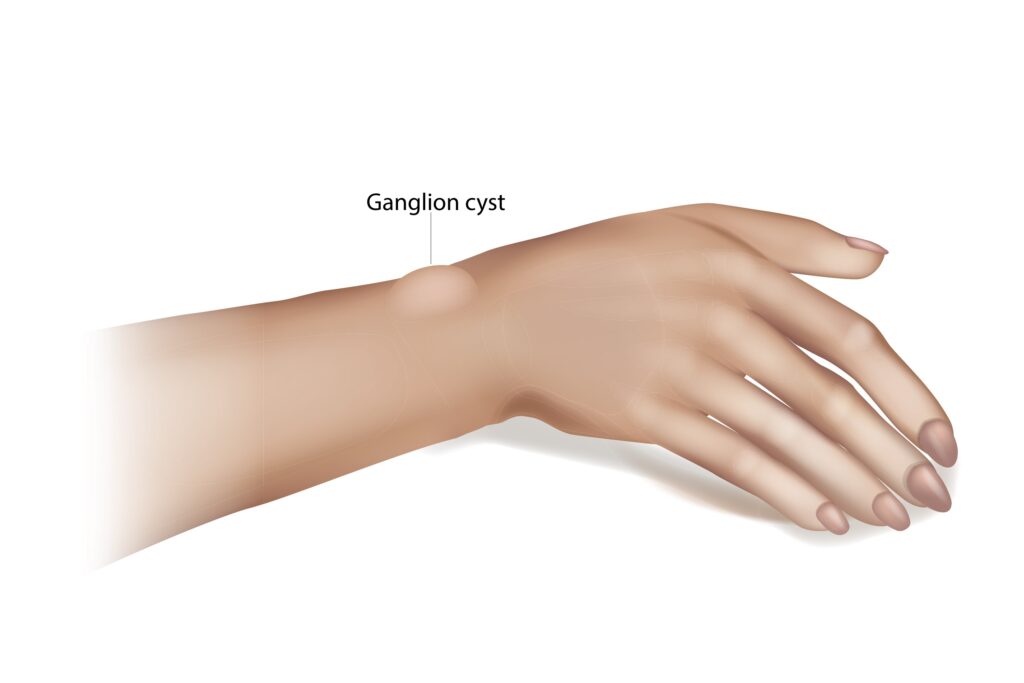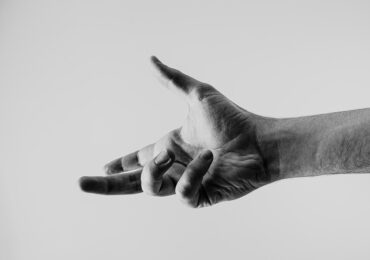Ganglion cysts raise many concerns, and if you know more about this bothersome bulge on your wrist, it should help ease some of your worries. In fact, the majority of ganglion cysts heal on their own. But if you have any symptoms, your doctor may advise emptying the cysts or taking them out surgically. Let’s dive into what causes ganglion cysts and your treatment options.
What is a Ganglion Cyst?
Ganglion cysts are benign fluid sacs that frequently appear near the back of the hand or the wrist. The cyst’s contents are described as similar to jelly and are sticky, clear, colourless, and thick. The cysts can have a hard or spongy feel, depending on their size.
Moreover, ganglion cysts typically disappear after some time has passed. In some cases, it may take some years for it to disappear. However, if you have one that bothers you or continues reappearing, therapeutic and surgical options are available to help get rid of ganglion cysts.

Where Can Ganglion Cysts Appear?
In most cases, ganglion cysts appear in the following locations:
- backs of hands
- wrist
- fingers
- knees
- ankles
- feet
What Causes Ganglion Cysts?
Ganglion cysts have an unknown cause. Some researchers believe that joint damage leads to the development of tiny cysts that eventually clump into a larger, more visible lump. Most likely, a defect in the tendon sheath or joint capsule enables the joint tissue to protrude.
There are some risk factors for ganglion cysts, including:
- Injury to the wrist or finger joint
- Repetitive activties that use wrists and fingers
- Chronic illnesses like arthritis
While it’s difficult to give an exact cause of gangliong cysts, injury, trauma, oevruse, and inflammation may play a role.
How Do You Know if You Have a Ganglion Cyst?
Ganglion cysts usually resemble and feel like soft lumps or bumps beneath the skin. Firmness is a common characteristic of cysts on the palm side of the finger’s base.
However, if the cyst is large enough, a pea-sized size, it can put pressure on the nerves. As a result, it can cause pain and possibly weakness that might affect the regular use of the wrist or hand.
Sometimes, these cysts can hinder your ability to do your daily tasks. They are often sensitive to pressure, such as when you grab something.
Is a Ganglion Cyst Cancerous?
To ease your worries, ganglion cysts are not cancerous. Fortunately, they usually disappear on their own. Ganglion cysts are usually harmless, but that doesn’t mean they can’t be uncomfortable. The larger the cyst, the more likely it may put pressure on the joint, causing pain or limiting mobility.
How to Treat a Ganglion Cyst
Your doctor may offer non-surgical ganglion cyst treatments. If your cyst is not causing pain or other symptoms, your doctor will advise you to monitor it for any changes.
If you have a ganglion cyst that is causing you discomfort, your doctor may advise one of the following:
Aspiration
The doctor administers local anaesthesia before making needle punctures in the cysts. After that, your doctor will drain the fluid out.
Immobilisation
This entails supporting the wrist with a brace or splint. This reduces pain and pressure on the nerves that the ganglion cyst is pressing on and may even cause the cyst to shrink.
Surgery
If non-surgical treatments fail or the ganglion cyst returns after aspiration, your doctor may recommend surgery. The surgical procedure involves removing the whole cyst and surrounding tissue – tendon sheath or joint capsule.
If you suspect that you have a ganglion cyst, speak to an expert at the Harley Clinic. Book a consultation today.
For the latest cosmetic surgery news, read our ultimate guide to Plastic Surgery Statistics.













